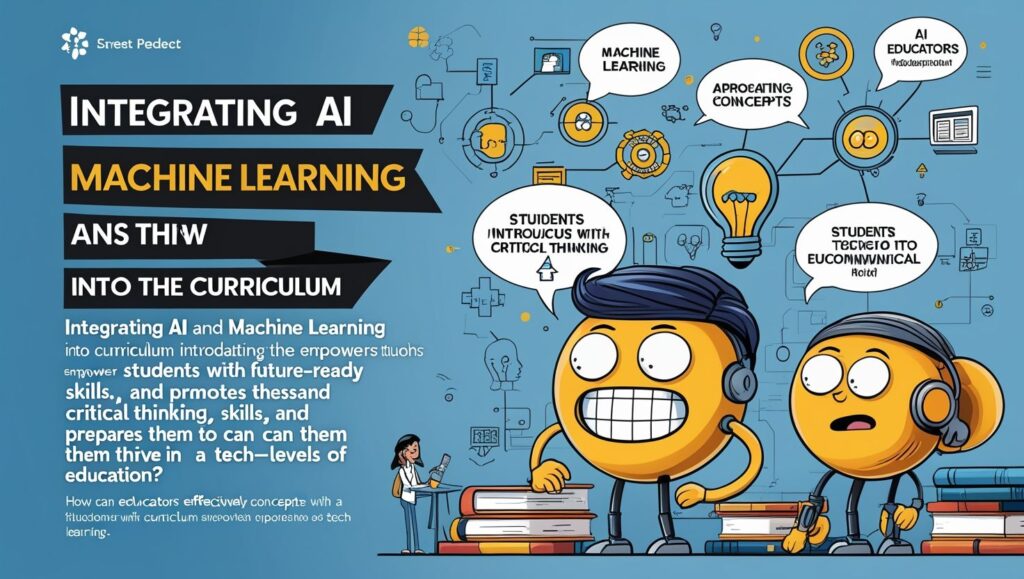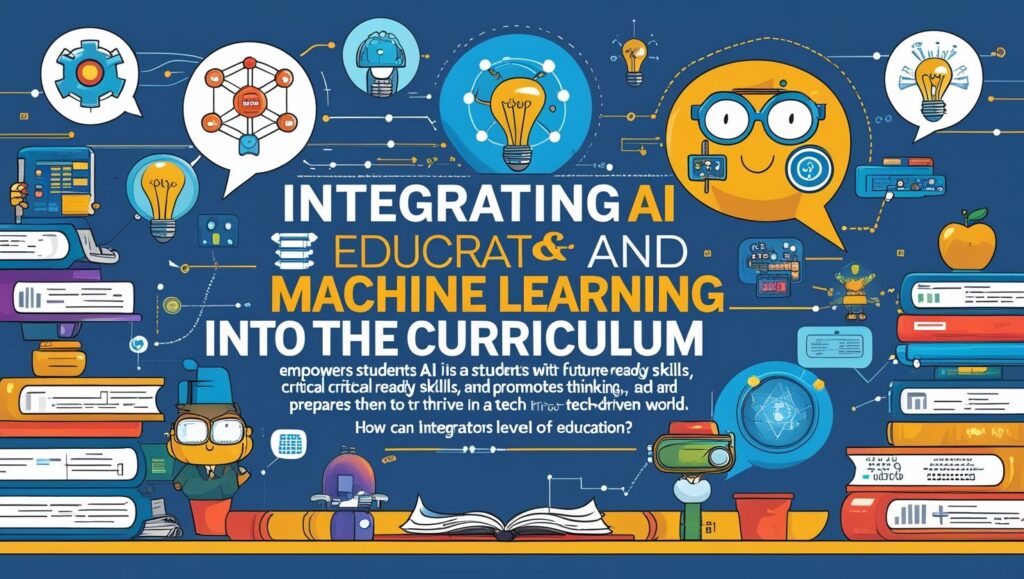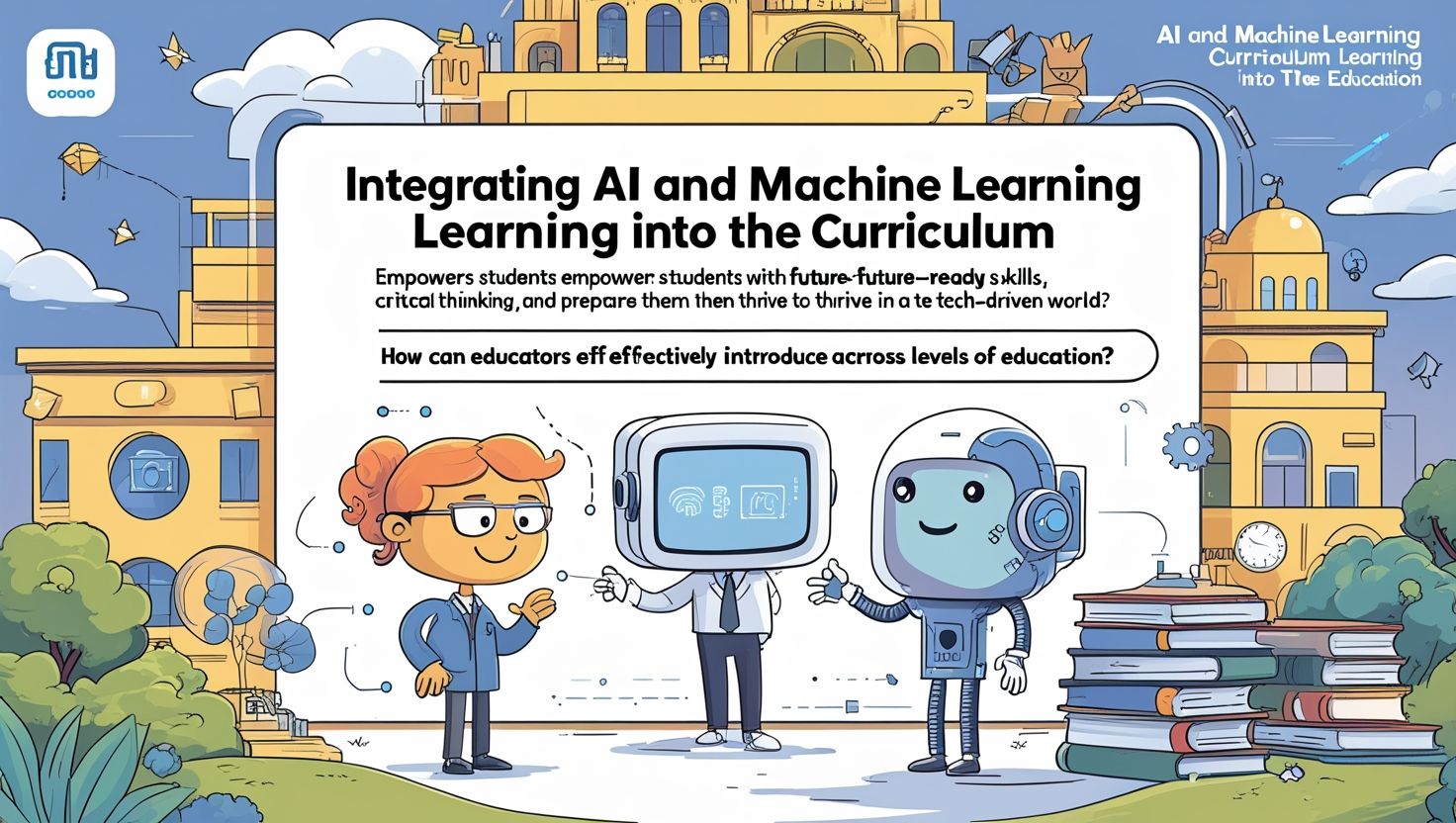Introduction
AI and Machine Learning in Curriculum, Artificial Intelligence (AI) and Machine Learning (ML) are transforming industries, economies, and daily life. As these technologies become increasingly integral to modern society, integrating them into educational curricula is essential to prepare students for future careers and informed citizenship. This article explores the growing importance of AI and ML in education, current approaches to teaching these subjects, challenges in implementation, and future directions for curriculum development.
The Need for AI and ML in Education
1. The Rise of AI in the Workforce
AI and ML are driving innovation across sectors, including healthcare, finance, transportation, and entertainment. According to the World Economic Forum, AI will create 97 million new jobs by 2025, while displacing others. To remain competitive, students must develop foundational AI/ML skills.
2. Digital Literacy and Ethical Awareness
Beyond technical skills, students must understand AI’s societal impact, including:
- Bias and fairness in algorithms
- Data privacy concerns
- Automation’s effect on employment
Integrating AI ethics into curricula ensures responsible future developers and policymakers.
3. Enhancing Problem-Solving and Computational Thinking
AI/ML concepts reinforce logical reasoning, pattern recognition, and data-driven decision-making—skills valuable across disciplines.
Current Approaches to Teaching AI and ML
1. K-12 Education: Introducing Foundational Concepts
Many schools are introducing AI/ML early through:
- Block-based programming (Scratch, Blockly) to teach basic AI logic.
- AI-powered tools (Google’s Teachable Machine) for hands-on experimentation.
- Robotics and AI competitions (FIRST Robotics, AI4All) to engage students.
Example: The UK’s National Curriculum now includes AI basics, while India’s NEP 2020 mandates coding and AI from grade 6 onward.

2. Higher Education: Specialized Degrees and Courses
Universities offer:
- Undergraduate/Graduate Degrees in AI, Data Science, and ML.
- Interdisciplinary Programs combining AI with healthcare, finance, or ethics.
- MOOCs (Massive Open Online Courses) from platforms like Coursera, edX, and Udacity.
Example: MIT’s “Introduction to Deep Learning” and Stanford’s “Machine Learning” (Andrew Ng) are widely used in academia.
3. Online and Self-Paced Learning
- Coding Bootcamps (Springboard, General Assembly) offer intensive AI/ML training.
- AI for Kids Programs (Code.org’s AI lessons, Cognimates) simplify complex topics.
Challenges in Implementing AI/ML in Curricula
1. Lack of Qualified Teachers
- Many educators lack formal AI/ML training.
- Solution: Teacher training programs (IBM’s AI Education, Microsoft’s AI School).
2. Rapidly Evolving Technology
- Curricula struggle to keep pace with AI advancements.
- Solution: Modular, updatable course structures.
3. Equity and Accessibility Issues
- Schools in low-income areas lack computing resources.
- Solution: Government grants, cloud-based AI tools (Google Colab).
4. Ethical and Bias Concerns
- Students must learn about algorithmic fairness, deepfake risks, and AI misuse.
- Solution: Case studies on AI ethics (e.g., facial recognition controversies).

Future Trends in AI/ML Education
1. AI-Powered Personalized Learning
- Adaptive learning platforms (Squirrel AI, Carnegie Learning) use AI to customize lessons.
2. Expansion of AI in STEM and Humanities
- Medicine: AI diagnostics in biology classes.
- Social Sciences: Analyzing AI’s impact on society.
3. Global AI Literacy Initiatives
- UNESCO’s “AI for All” program promotes inclusive AI education.
- The EU’s “Digital Education Action Plan” includes AI in schools.
4. Industry-Academia Collaboration
- Partnerships with Google, NVIDIA, and OpenAI to provide real-world AI projects.
Conclusion
AI and ML are no longer optional—they are essential components of modern education. Schools and universities must adapt by integrating these subjects into curricula, training educators, and ensuring equitable access. By combining technical skills with ethical awareness, we can prepare students to harness AI’s potential responsibly. The future of education is intelligent, adaptive, and inclusive—AI literacy will be its cornerstone.

İstanbul su kaçağı tespiti Su kaçağı tespiti, çevre dostu ve su kaynaklarını koruyucudur. https://newdoorfiji.com/?p=30958
LeoVegas https://www.webwiki.nl/leovegas.one
Really helpful content – thanks for putting this together!
This was a great read! I learned something new today.
Loved your perspective on this topic. Keep it up!
Thanks for the valuable insights. Looking forward to your next post!
spbibn
Good web site! I really love how it is easy on my eyes and the data are well written. I am wondering how I could be notified whenever a new post has been made. I’ve subscribed to your RSS feed which must do the trick! Have a great day!
You actually make it seem so easy with your presentation but I find this topic to be actually one thing that I feel I’d never understand. It sort of feels too complex and extremely vast for me. I am taking a look forward on your next put up, I’ll try to get the hang of it!
I’ve been absent for a while, but now I remember why I used to love this blog. Thanks, I will try and check back more frequently. How frequently you update your website?
This site is my inspiration , really wonderful pattern and perfect subject matter.
Can I simply say what a reduction to find somebody who really knows what theyre speaking about on the internet. You undoubtedly know find out how to carry an issue to gentle and make it important. Extra folks must learn this and understand this side of the story. I cant believe youre no more widespread since you undoubtedly have the gift.
I like this web site very much so much great info .